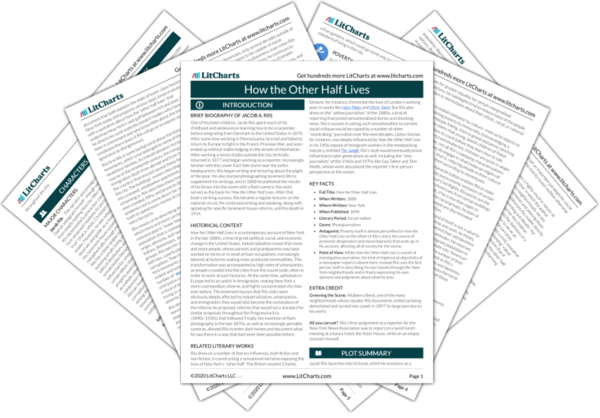In chronicling the desperation of the city’s poorest residents, Riis also draws attention to the ways this population attempts to maintain a sense of pride and dignity in the face of squalid conditions. One of these ways manifests itself in the desire to have a proper funeral for family members, even or especially if they die as a result of starvation or diseases directly related to poverty. While Riis spends time moralizing about the expense of such funerals for people who cannot afford them, he also recognizes the significance of such rituals—especially given the fact that the lack of a proper burial can be considered a profound dishonor. The common grave or Poor Burying Ground—also known in the book by the ancient characterization of the “potter’s field”—inevitably awaits many of the tenement inhabitants whose lives Riis chronicles. After death, their bodies are dumped in a common grave without an individual tombstone or marker, a process that Riis describes as a fulfillment of the anonymity and lack of social care that defined these people’s identities while they were alive. Death, rather than serving as a final resting place or freedom from life’s difficulties, only confirms the inequalities and injustices embedded within late-nineteenth-century New York society.
The Potter’s Field Quotes in How the Other Half Lives
Chapter 22 Quotes
There is often tragic interest in the struggles of the ensnared wretches to break away from the meshes spun about them. But the maelstrom has no bowels of mercy; and the would-be fugitives are flung back again and again into the devouring whirlpool of crime and poverty, until the end is reached on the dissecting-table, or in the Potter’s Field.










